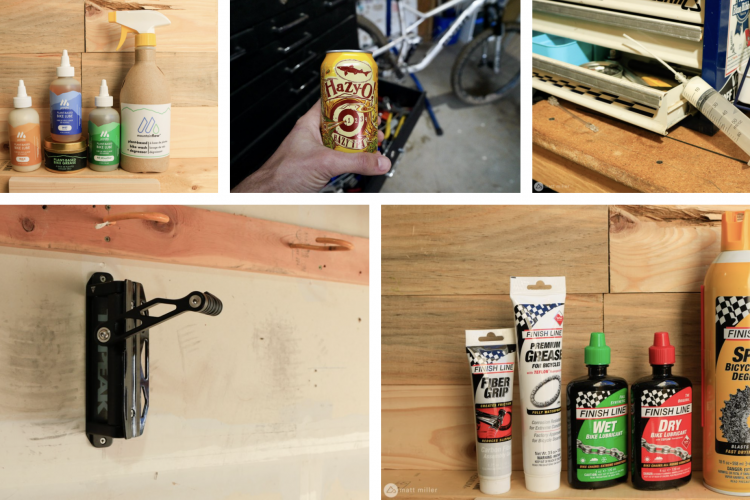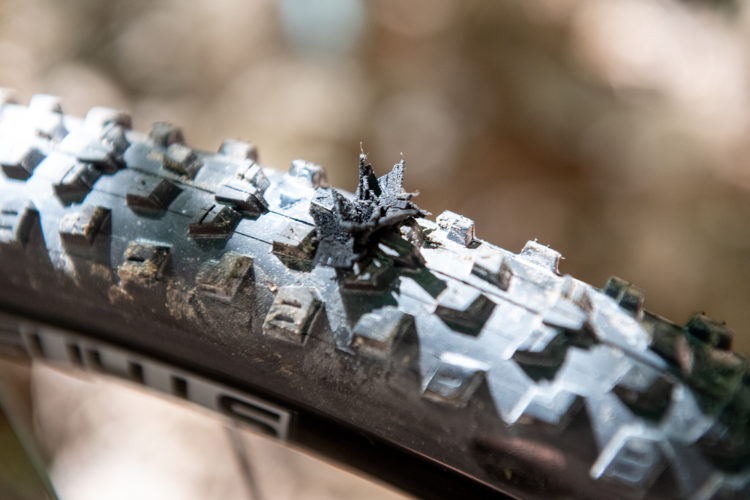
Tubeless tires are a godsend to mountain bikers when it comes to performance. But maintenance can be a hassle. So Milkit decided to come up with a solution.
The Milkit Valve System ($59.99 MSRP) consists of a syringe, tubing, and valves in a single kit. As you can see in the photo at the top, the whole kit fits inside the syringe for easy storage and access when you need it.

Starting with the valves, Milkit has put a ton of thought into the product and improving the tubeless tire experience. The removable core is longer and sturdier than most. But what really sets these valves apart is the use of a one-way flap at the bottom (inside the tire) that lets air in, say from an air compressor, but prevents air from escaping when the valve core is removed. The idea is to allow users to check sealant levels and top off without having to fully deflate the tire which risks unseating the tire bead.


Even the screws that hold the valve tight to the rim from the outside feature fancy little rubber gaskets to prevent air loss at the rim hole. I usually just trash the plastic valve caps when I install a tube or a new set of valves, but the Milkit caps are actually really nice and have a good feel to them.

The real star in the Milkit Valve System is the syringe which is designed to serve two purposes. First, it makes measuring and adding sealant a breeze. Just dip the hose in a bottle of sealant and slurp up the amount you need (generally 2 ounces for regular tires, 3 ounces for plus, and up to 4 ounces for fat tires.) Remove the valve core, insert the hose into the valve, and push the sealant inside.

Not only is the syringe useful for filling a tire with sealant, it can also be used to measure the amount of liquid sealant available inside a tire, without unseating the bead. Rotate the tire so the valve is at 6 o’clock, insert the straw, and draw the sealant into the syringe. I imagine it’s not really possible to get every last drop, but it’s a good way to estimate. If the tire is low, use the syringe to add more sealant.

Now, about that one-way flap on the valve. The idea is it allows the user to remove the valve core without letting all the air escape, but use some caution here. Milkit recommends you have less than 20psi in the tire before inserting the hose, and with good reason. I mounted a new tubeless tire and jacked up the pressure to 40psi to get the bead seated before I added sealant. Without thinking, I removed the valve core, inserted the tube, and POP! Sealant everywhere, including my face, as the pressure blew the entire stopper out of the syringe. Lesson learned.
The hose is actually pretty stiff and has a nice pointy tip which allowed me to poke through my tire inserts to get sealant in place. Without the hose, getting sealant into the tires when running certain inserts requires removing the bead from the rim.
Compared to my primitive system of shaking tires and using a crusty, used Stan’s 2oz. bottle with a nozzle to add sealant, the Milkit Valve System is a huge improvement. It makes the whole process cleaner, more precise, and faster. While the price could be a deterrent, there’s certainly a lot of value in having the right tool for the job when working on a mountain bike.
⭐️ Find the Milkit Valve System at REI
Thanks to Milkit for providing the Valve System for review.



















